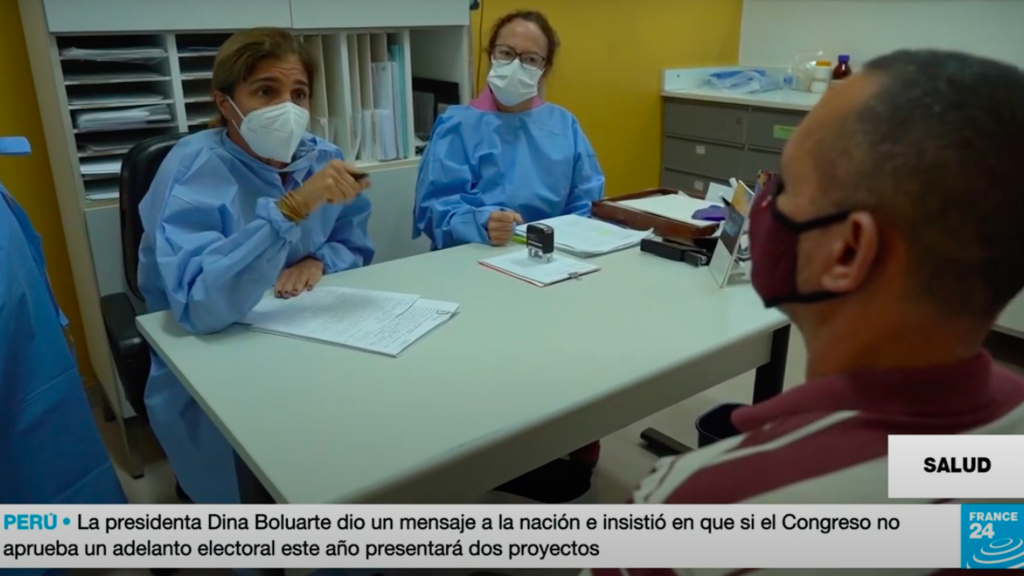First modification:
Brazil is the second country in the world with the most cases of leprosy according to the World Health Organization. It is only behind India. Known in academia as Hansen’s disease, leprosy is one of the world’s oldest diseases. Already in the sixth century BC there were records about it.
“I was at home and when I woke up, my body was full of small spots. I didn’t know what it was. I went to the doctor and he thought it was monkeypox”, says Fernando, a 51-year-old man who discovered seven months ago that he was infected.
When he received his diagnosis, he had to deal with a social stigma that persists, despite the fact that with a year of treatment the symptoms disappear completely. “I was not afraid. The main problem is how to tell people in your family, colleagues at work. Not everyone knows what Hansen’s disease is, nor understands it. There are many prejudices, ”adds Fernando, who to this day does not know who could have infected him.
Between 2016 and 2020, 155,359 new cases of leprosy were diagnosed in Brazil. During the Covid-19 pandemic, the number fell in the statistics, but not its actual incidence.
At the Oswaldo Cruz Foundation in Rio de Janeiro, which is a benchmark in scientific research in Brazil, they explain that the coronavirus eclipsed many diseases and that during the most acute phase of the pandemic, patients simply stopped going to outpatient clinics looking for of a diagnosis.
Currently, Hansen’s disease is considered endemic in this tropical country. Contrary to popular belief, it is not that contagious. The bacillus enters through the respiratory tract, but only after prolonged contact with someone who is ill. Poverty and malnutrition also affect the immune response.
The “Brazilian Holocaust”
Following the example of other countries, in the 1920s Brazil decided to isolate people diagnosed with leprosy, as it was called at the time. These patients were sentenced to compulsory hospitalization, which isolated them from the rest of society in hospitals and colonies scattered throughout the country.
The sick colonies grew, surrounded by walls so that no one could escape. Over time, they became true cities within cities, with houses, shops, churches, sports fields, a cemetery and even a jail with a kind of community police force. The media came to speak of the “Brazilian Holocaust.”
For half a century it is no longer compulsory to enter a center. Patients like Fernando receive free medical attention and remedies in specialized outpatient clinics.
Early diagnosis, the solution
The Public Health System covers all expenses. “The most important thing for Hansen’s disease is early diagnosis and early treatment. Only in this way will we be able to avoid disability, deformity and stigma”, explains Anna Maria Sales, the dermatologist at the Oswaldo Cruz Foundation who is treating Fernando.
The first symptoms are an alteration in thermal and tactile sensitivity, which can cause wounds and burns, which if not treated, end up becoming infected. “There are also changes in the nervous and motor part. It is quite common to see that the little finger becomes atrophied due to a loss of muscle, which can be disabling in the long run. There are patients who cannot write or eat”, says Sales.
The problem is that in Brazil there is still a lot of misinformation about this disease. On the other hand, the fear of being discriminated against prevents many patients from seeking medical help.
“Social stigma is the main obstacle because it ends up harming the patient during treatment and in their quality of life. It is a vicious circle, because stigma causes less demand for care, which in turn implies less medication and more symptoms. Health worsens and the stigma increases more and more ”, clarifies this dermatologist.
The World Health Organization hopes to eradicate this disease by 2030. Until then, Fernando hopes that it will be just a memory for him.













